The American Civil War (1861-1865) a civil war broke out in the United States of America between the federal government, which was known as "Unionists", compared to eleven southern states that hold on to slavery. These states established what was called the Confederate States of America and declared their secession from the other northern states.
The leadership of the southern states took over from President Jefferson Davis, while the Union forces were under the leadership of President Abraham Lincoln and the Republican Party, which was opposed to the expansion of slavery and rejected any declaration of secession of the southern states. Despite the name of the civil war, the southern confederate forces limited their desire to secede, not to control the central (federal) government. The fighting began on April 12, 1861, when the Confederate forces attacked a federal force at the Battle of Fort Sumter.
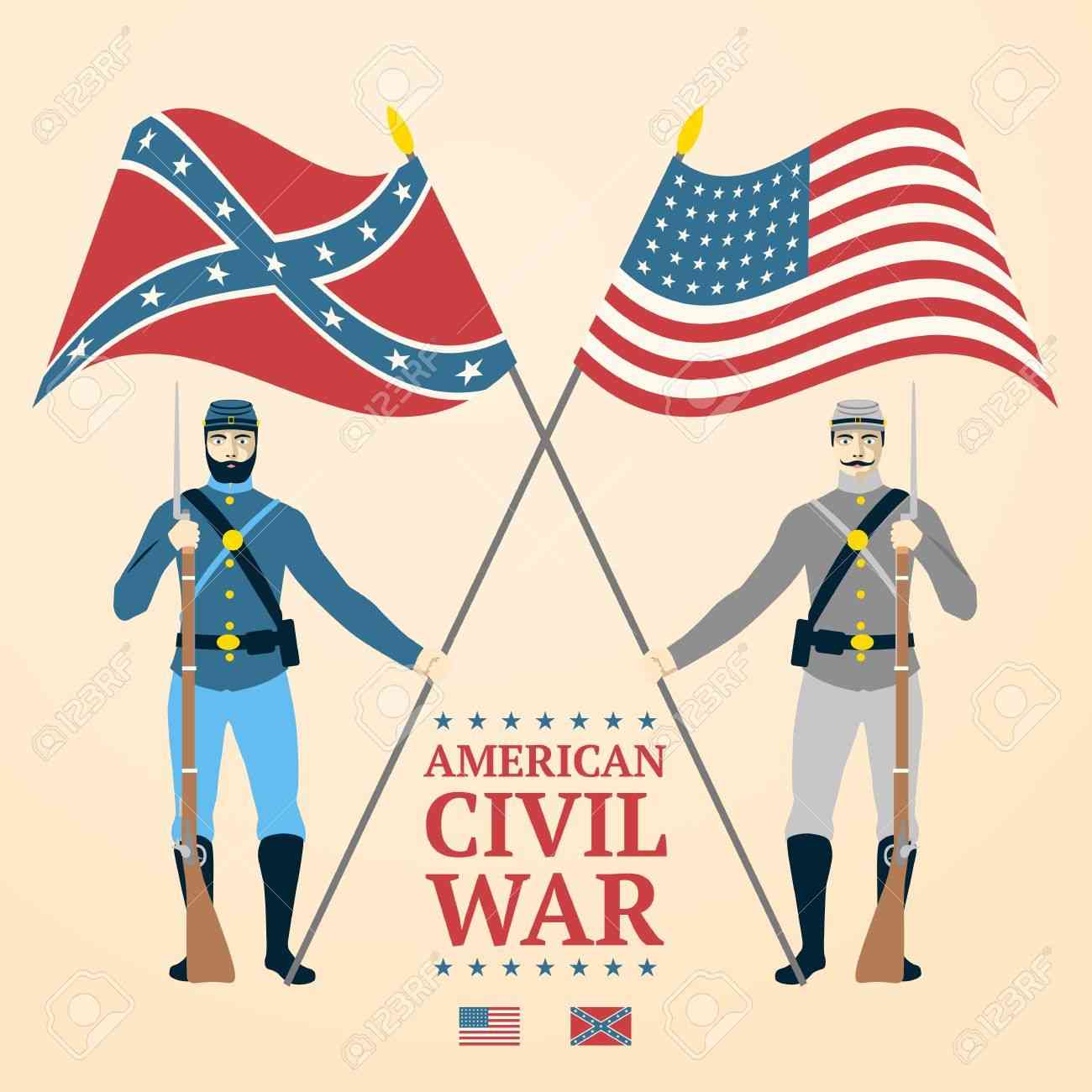
The Civil War was known as the Interstate War and the War of Secession, too. The war began on April 12, 1861 AD when a southern division attacked the Fort Sumter military site in Charleston, and the war lasted for four full years, then ended with the surrender of the southern army led by Robert Lee to the northern forces.
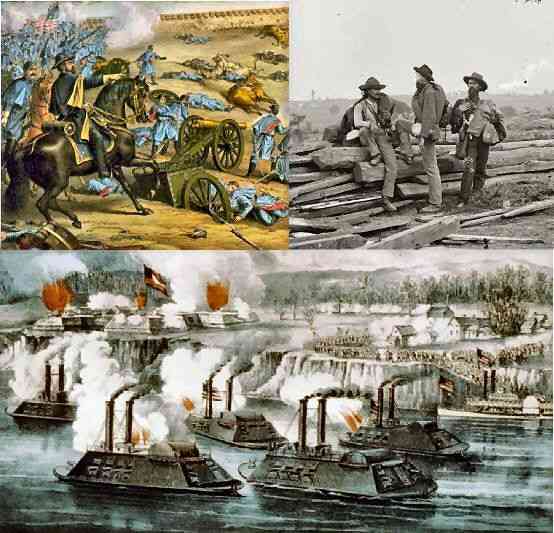
Causes and backgrounds of war :-
Most historians agree that there are many reasons for the American Civil War, and focus on the regional difference between the North and the South in terms of the difference in the economic situation, and in intellectual concepts, and ways of living, and point to disputes between the federal government and the states over the powers of those states, and mention the politicians floundering, and the loss of the system In party life during the 1850s. However, all interpretations refer to or revolve around the issue of slavery.
The division between the two parties :-
The lives of the people of the south were mainly dependent on the cultivation of tobacco in their fertile lands and the warm climate that is appropriate for it. Therefore, they sped the Africans to do this task, while the people of the North were busy with business, as the cold weather and rocky land in the north prevented the possibility of expanding agriculture.
The northerners have been working hard and focusing on education and a free economy, realizing that society has the right and responsibility to decide whether any activity or activity in it is consistent with ethical behavior or not. They were looking for modernization, change and a better future, while the southerners were sticking to their unchanged situation, surrendering to a sense of economic prosperity resulting from agricultural business without wanting to think about changing their lifestyle.
Conflict over the slave system :-
The thirteen American states were integrated and faced their nascent and unified army, with the aim of independence, until it attained independence a few years after the declaration of independence. The American constitution was drafted in a way that guarantees a delicate balance between the different states, taking into account their different sizes in a way that represents a unique precedent in political systems.
That prevailed in the modern world, and this fledgling country overcame all the difficulties over time, but was unable to protect itself from the evils of the civil war that erupted in 1861 and that was a somewhat different war, it was not linked to an attempt or change the political system of the state or re-balancing process or the distribution of power, but was a socio-economic reasons, basically.
The majority of historians do not differ in considering slavery as the main reason behind the outbreak of this civil war, and without it this war would not have taken place. The American economic and social composition was different from those in the world. Directly to create a different social and cultural environment from the southern states that relied mainly on agricultural economics, This pattern of development and development in the North has created an intellectual and cultural environment and way of life that is significantly different from the South, which in turn has not been able to develop itself as required.
The economies of the southern states were mainly dependent on agriculture, especially the cultivation of cotton, sugar, tobacco, and other Goods that were generating a high financial return on cash Crops, and this resulted in direct dependence on labor that was not readily available among the sons of the landowners class, and therefore a trend appeared to rely on slavery for land cultivation, because these crops require labor intensive. The more the countries of the South expand their agricultural economic development, the greater the need for more slavery, and some historical statistics indicate that the size of American slaves at independence did not exceed seven hundred thousand, but this number directly jumped to nearly two million by 1830. Then it again jumped to Nearly 4 million by 1860.
Nevertheless, the states of the American South did not seek at any stage of its development to enter the industry to reduce its dependence on agriculture or create a required diversification, and there were many opinions on the reason behind this industrial laziness, including the opinions that attributed it to the inadequacy of the southern environment for such modernity, as well That slaves could not be counted on to try to establish this economic system.
Consequently, the industrial base in the south was confined to agriculture-related industries such as textiles and others, and this led to a social development for the South that is completely different from the North, as this society slipped in its different social and then cultural orientations, so it became a conservative society based on forms similar to the patterns of development in the Middle Ages European society is completely different from the northern states, This made the gap widening between the goals and interests in the north compared to the south. The fact of the matter is that the seeds of the civil war began since the founding of the United States of America, as the political and social composition pushed many thinkers, churchmen and politicians to try to eradicate the phenomenon of slavery, which is what the southern states viewed as a direct cause in striking their economic and social environment.
The voices calling for the abolition of slavery began, and of course there were politicians and thinkers who directly contributed to the drafting of the independence document led by "James Madison" and "John Adams", but this movement did not go beyond the scope of abstract calls for the liberation and prohibition of slavery, and it was not from Surprisingly, this movement has erupted gradually from the state of Massachusetts. Which was the source of the War of Independence and the most civilized and cultural state, but this movement soon began spreading in other states, then in the states of the South itself, and a broad social movement began calling for the necessity of liberation, and soon the flames of liberation broke out to the south as well, so the voices calling for an end to slavery began to appear.
However, the Southern Resistance began to appear, so that many churches in the South began to seek appropriate justification for this social phenomenon on religious grounds, based on the fact that slavery is contained in the Old and New Testaments alike without prohibition, and that Christ did not end slavery, The anti-political movements also did not delay in this direction, and by the fourth decade of the 18th century political skirmishes began within the Congress as many politicians sought to try to obtain their constitutional amendments in order to abolish slavery in the south, which was faced by representatives of the South with very large verbal and political wars in the Congress.
The fact of the matter is that this war erupted in the American Congress before the various battlefields over the course of 4 years that followed. Mazuri, "who authorized slavery in the state of" Missouri "and prevented it in Maine, then the crises erupted after that when the United States expanded at the expense of Mexico, What will be the fate of slavery in these states? The United States entered the specter of war by the 1850s, and the solution was more harmonization and balance within Congress and in these states where Congress decided to leave these states to determine their position on the issue of slavery, especially New Mexico’s Utah, and this was later known as the 1850 harmonization, especially after it was decided that the state of California would join the United States on the basis that it is an independent state that has the right to authorize slavery or not within the framework of what was known as “popular sovereignty”, while on the other hand it decided to increase the punishment for fugitive slaves.
Throughout the 1950s, the dialogue on slavery began to take the nature of political tensions until it was transformed on one occasion by hands in Congress. This was a warning that the spread of violence in the states became a matter of time, and Kansas was the candidate to witness arenas of violence as a result of this heated debate. Thus, fighting became the only solution when the political scene turned into a dispute between the North and the South over slavery, a political dispute extending to the new way of life to be pursued by the United States, and this was the crux of the matter.
The US Congress passed some compromise legislation in the year 1850 CE, in the hope that it would help in solving the problem of slavery, including a law that allowed the slave system to remain and prevent its trade in Washington DC, and another strict law requiring northerners to return fleeing slaves to their companions, and he resisted Northerners This law regulates a method to secure the escape of slaves fleeing from their masters. In 1854 AD, Congress passed the Kansas and Nebraska Act, according to which the states of Kansas and Nebraska were established and slavery permitted. Also, any new state has the right to legalize or prohibit slavery in it by universal vote.
In the year 1857, the case of a slave, named Dorid Scott, was brought before the United States Supreme Court. He had claimed freedom because he previously lived in a free state and a free zone. But the court's decision rejected Scott's claim and ruled that no blacks had the right to become a citizen of the United States, and that Congress could not nullify slavery, in the territories. This infuriated the North and demonstrated that the dispute over slavery could not be solved judicially.
Beginning of separation :-
When Abraham Lincoln was elected to the presidency, the southerners feared that the president would pass a resolution abolishing slavery and they decided to withdraw from the union. South Carolina first withdrew in December 1860 AD, followed by the states of Mississippi, Florida, Alabama, Georgia, and Louisiana in January 1861. And the six states formed among themselves the so-called Allied States of America, and elected Jefferson Davis as its president.
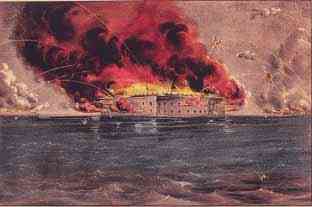
In his speech on the occasion of his assumption of the presidency in March 1861 AD, Lincoln assured that the federal union would remain forever, and that he would use all the capabilities of the homeland to preserve all federal property in the south. Among them was the Fort Sumter Military garrison site in South Carolina, which was attacked by the southerners on April 12, 1861 AD and forced to surrender, so Lincoln ordered the federal forces to retrieve the garrison site on April 15, which the Southerners considered a declaration of war. Then, in May, five other states joined the southern states, Virginia, Arkansas, North Carolina and Tennessee, and Richmond, Virginia's capital, became the Confederate capital.
South Carolina has made more efforts to secede than any other southern state. On December 24, 1860, South Carolina adopted the "Proclamation of the Direct Reasons for the Separation of South Carolina from the Federal Federation." He defends the rights of slave owners in the south, but includes a complaint about state rights in the north in the form of opposition to the Refugee Slave Act, claiming that the northern states did not fulfill their federal obligations mandated by the constitution. All alleged violations of the rights of southern states were related to slavery.
Winter of separation :-
Before Lincoln took office, seven states had announced their secession from the union. On February 4, 1861, a southern government was established for the Confederate States of America. It controlled federal forts and other property within its borders with little resistance from the outgoing President James Buchanan, whose term expired on March 4, 1861. Buchanan said that Dred Scott's decision was evidence that the South had no reason to secede, and that the Union "was intended to It remains forever, "but" using force of arms to compel a state to remain in the union "is not among the" powers conferred upon Congress. " A quarter of the US military - the entire Texas garrison - surrendered to state forces led by Commander in Chief David E. Twiggs, who then joined the Confederacy
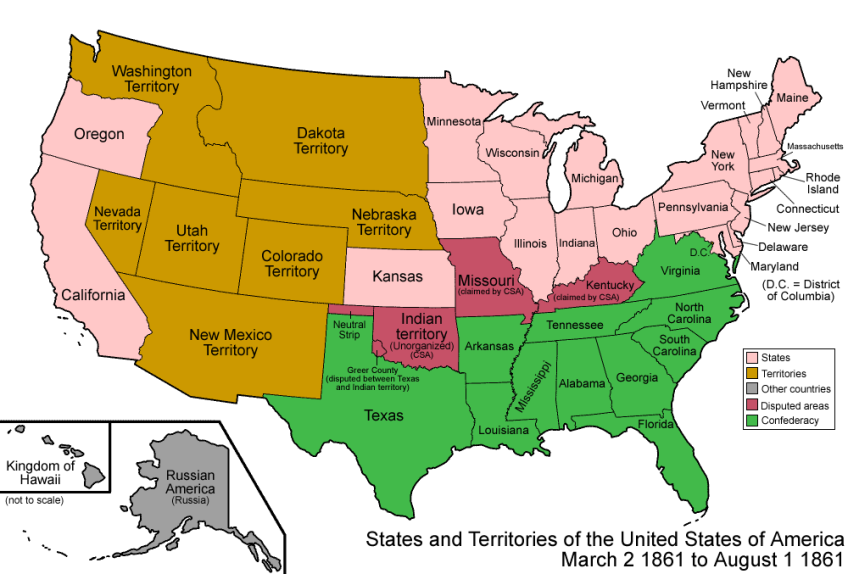
Southerners resigned their seats in the Senate and House of Representatives, and thus Republicans subsequently managed to pass bills for projects that were rejected by the South Senate before the war, including Morrell tariffs, Land Grand colleges (Morrell's law), home law, and passing railways Continents (Pacific Railroad Law), the National Banks Act and the United States Bank Notes under the Currency Act 1862. The Revenue Act of 1861 employed an income tax to help finance the war.
Confederation :-
Confederate States of America :-
By February 1861, seven states in the southernmost states had announced their secession, beginning with South Carolina, Mississippi, Florida, Alabama, Georgia, Louisiana, Texas. These seven states formed the Confederate States of America (in February, 1861), with the installation of Jefferson Davis as president, and the formation of a government structure modeled after the United States Constitution. President Lincoln called for the formation of a volunteer army from every state in the wake of the attack on the Fort Sumter base.
Within two months, four southern slave states announced their separation and accession to the Confederacy: Virginia, Arkansas, North Carolina, and Tennessee. Later, the northwestern part of Virginia separated from the state itself, and it joined the Union as a new state in West Virginia on June 20, 1863. By the end of 1861, the states of Missouri and Kentucky separated and each divided into a pro-South and pro-North government.
Union States: Union :-
(American Civil War)
Twenty-three states remained loyal to the union: California, Connecticut, Delaware, Illinois, Indiana, Iowa, Kansas, Kentucky, Maryland, Massachusetts, Michigan, Minnesota, Missouri, New Hampshire, New Jersey, New York, Ohio, Oregon, Pennsylvania, Pennsylvania Rhode Island, Vermont, Wisconsin. During the war, Nevada and West Virginia joined new states to the union. Tennessee and Louisiana states also returned to Union control at the start of the war.
The following states fought alongside the union: Colorado, Dakota, Nebraska, Nevada, New Mexico, Utah, and Washington. The Confederacy supported many tribes of slave owners, and a small bloody civil war took place in Indian Territory (now Oklahoma).
Border states :-
Frontier States (American Civil War) :-
The border states belonging to the union are: West Virginia (which separated from Virginia and became a new state), and four of the five northern states of the slaves are Maryland, Delaware, Mazury, Kentucky.
Maryland had many federal loyalists who rioted against the Union in Baltimore and burned bridges.
In response, Lincoln declared martial law, and called the troops. Militia units that were excavating in the north rushed towards Washington and Baltimore. Before the Confederate government realized what was happening, Lincoln had gained control of Maryland (and the separate region of Colombia), by arresting and holding all members of the Maryland state government without trial.
Mazouri's mandate voted to remain in the federation. When the Confederate Governor called Claiborne F. Jackson's militia forces, were attacked by federal forces led by General Nathaniel Leon. After the events of Camp Jackson, Leon chased the governor and the rest of the state guards to the southwest corner. (See also: The secession of Mezouari Province) In light of this, he called a meeting on secession, and the federal interim government in Mezuri seized power.
But Kentucky did not separate and declared itself neutral. But when the Confederate forces entered the state in September 1861, impartiality ended and their allegiance was declared, with the attempt
to preserve slavery. During a brief incursion of the Confederate forces, some Confederates organized a secession agreement, which they presented to the ruler, and it gained recognition from the Confederacy. But the rebel government was sent into exile, and it never controlled Kentucky.
After Virginia's secession, the federal government asked 48 provinces to vote on a law to create a new state on October 24, 1861. 41 provinces responded, and a small percentage voted heavily in favor of the new state, initially named "Kanawa" but later renamed "West Virginia" , And it joined the Union on June 20, 1863. Jefferson and Berkeley counties joined the new state in late 1863. In the western provinces of Virginia, nearly 2 to 1 voted against secession, while 24 of the fifty counties voted in favor of secession. West Virginia soldiers are about to divide the Confederation and the Union.
Unionists also made similar secessionist attempts in eastern Tennessee, but the Confederacy suppressed them. Jefferson Davis arrested more than 3,000 men suspected of being members of the union and detained them without trial.
Overview :-
More than 10,000 military engagements occurred during the war, 40% of them in Virginia and Tennessee. Since the separation is dealt with every big and small battle, which led to the expansion of the range of battles. For more information see the list of American Civil War battles and military leaders in the American Civil War.
The beginning of the war Lincoln's victory in the 1860 presidential election prompted South Carolina to declare secession from the union. By February 1861, six other southern states declared their secession. On February 7, the seven states established a temporary constitution for the Confederate States of America, and established their temporary capital in Montgomery, Alabama. The pre-war peace conference in February 1861 was in Washington, A failed attempt to resolve the crisis.
The other eight slave states rejected appeals by states to join the alliance. The Confederate forces captured most of the federal forts within its borders. President Buchanan protested, but did not express a military response, to avoid the failed attempt to resupply Fort Sumter using the "Star of the West" ship, which was shot by South Carolina forces, and returned before arriving at the fort. However, the governors of Massachusetts, New York, and Pennsylvania began purchasing weapons and training militia units on them.
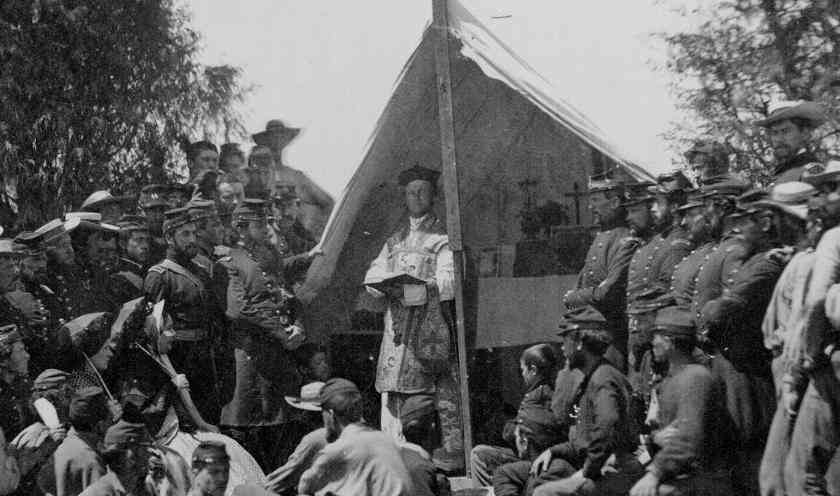
On March 4, 1861, Abraham Lincoln was sworn in as President of the Republic. In his opening speech, he said that the constitution was a better union than Confederate laws and a permanent union, as it was a binding contract, and he considered any separatist attempt as "legally void." He stated that he had no intention of invading the southern states, nor did he intend to end slavery wherever he existed, but would use force to preserve the ownership of federal lands. He ended his speech with an appeal to restore association to the union.
The southern countries sent delegations to Washington, and offered to pay the federal countries and enter into a peace treaty with the United States. Lincoln rejected any negotiations with agents of the Confederacy on the grounds that the Confederacy was not a legitimate government, and any treaty with it would amount to an admission that it was a sovereign government. However, Secretary of State William Seward participated in informal and indirect negotiations but failed.
Fort Sumter's forts in Charleston, South Carolina, Fort Pickens and Fort Taylor were the remaining forts of the Confederacy, and Lincoln's intention to keep Fort Sumter. On the orders of Confederate President Jefferson Davis, forces controlled by the Confederate government led by B. Ing. T. Beauregard of the fort with artillery on April 12, forcing the fort to surrender. The Northerners gathered behind Lincoln's call for all nations to send troops to seize fortresses and preserve the Union. The scale of the revolt does not seem to be that great yet, so Lincoln called for the gathering of 75,000 volunteers for a period of 90 days. Many northern state governors had equipped their militia for months with discretion, and began moving troops the next day. The arms depot in Liberty and Missouri were besieged eight days after Fort Sumter.
There were four states in the Upper South (Tennessee, Arkansas, North Carolina, and Virginia), who had repeatedly rejected Confederate initiatives, and now they refused to send forces against their neighbors, declared their secession, and joined the Confederacy. To reward Virginia for this, the Confederate capital moved to Richmond. The city was a symbol of the Confederacy. Richmond was in a highly sensitive position at the end of the curved Confederate supply line. Although Richmond was heavily fortified, its supply would be affected if Sherman took control of Atlanta and might be cut off altogether if Grant besieged Petersburg and its railroads that supplied the southern capital.
Anaconda Plan and Siege of 1861 :-
Winfield Scott, Commander in Chief of the United States Army, developed the Anaconda war-winning plan with the least amount of bloodshed possible. His idea is that the Union blockade of the main ports would weaken the Confederate economy; thus controlling the Mississippi River would lead to the division of the South. Lincoln adopted the plan, but rebutted Scott's warnings against any immediate attack on Richmond.
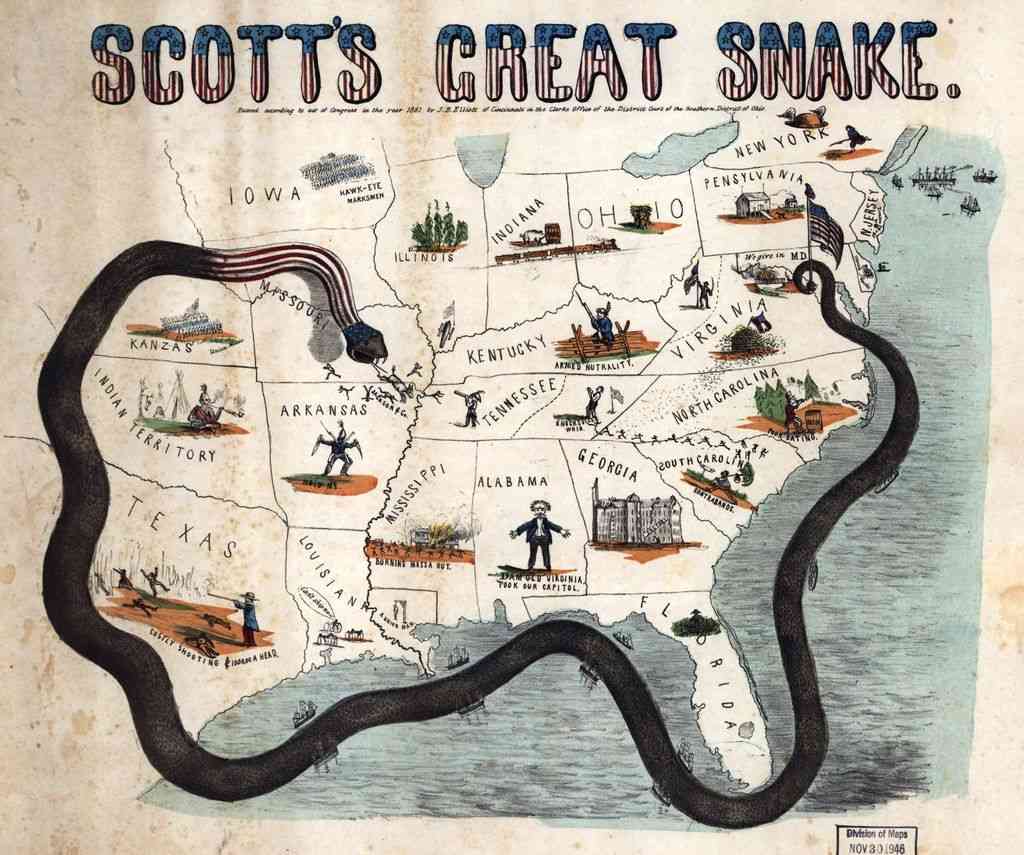
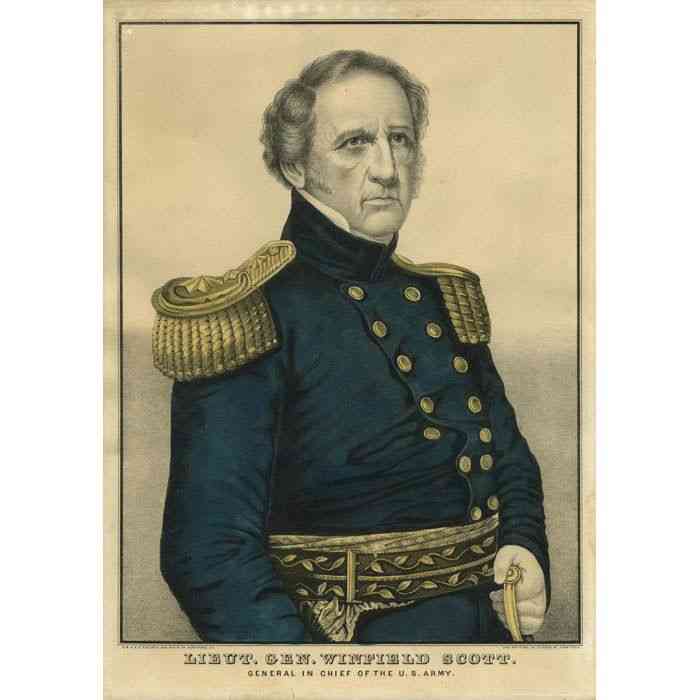
In May 1861, Lincoln imposed a union blockade on all southern ports, and prevented the international shipment of states to the Confederacy. When the wrongful ships and cargo were confiscated, they were sold and their profits were directed to the Union of Seafarers, but the British crew was released. By late 1861, the siege had halted most of the internal transfers from the port to the port. The blockade also halted the cotton trade, destroying the southern economy. British investors built small and fast ships to trade in arms and luxuries brought in Bermuda, Cuba, and the Bahamas in exchange for high-priced cotton and tobacco. Food and commodity shortages caused by the blockade and logging of the northern armies, as well as coercion of crops from the Confederate armies, caused inflation and riots due to the high price of bread in the south.
On March 8, 1862, the Confederate Navy launched a war against the Union fleet, when the armored USS Virginia attacked the siege of the wooden ships, it seemed that it did not stop but the next day they had to fight the new Union armored USS "Monitor" in a battle of armor The battle ended in a draw, and it was a strategic victory for the federation, as the siege continued. The Confederate forces lost Virginia when the ship was breached to prevent captivity, and the Confederation built many likes of Monitor. Given the Confederate States' lack of technology to build warships, they attempted to obtain them from Britain.
Confederation victory in the second battle at Fort Fisher in January 1865 was followed by the closure of the last southern port and the forbidding of ships.
In the first year, the Unionists were able to control the border states and establish a maritime sector. In 1862, violent bloody battles began. After the Battle of Antietam in September 1862, Lincoln issued the Emancipation Proclamation, making the emancipation of slaves in the south a target of war - something that was opposed by the Copperhead (a section of Democrats opposed to the Civil War). The statement aimed at freeing slaves affirmed that neither Britain nor France should interfere in helping the Confederates. This stated goal also helped the emergence of resistance from African Americans in the southern states, a factor that the Confederate forces did not remedy until late.
War in the East (1861-1863 AD) :-
In the East, Robert Lee managed to achieve good victories for the Confederates against a number of federal leaders, but his best generals, Stonewall Jackson, was killed at the Battle of Chancellorsville in May 1863. Lee's breakthrough to the North was stopped at the Battle of Gettysburg in July 1863 and barely managed to withdraw to Virginia. In the west, the US Navy gained control of New Orleans in 1862, and the forces, led by Ulysses Grant, took control of the Mississippi course by controlling Vicksburg in July 1863, thereby separating the two Confederations (splitting the southern states separation).
The first battles :-
Many northerners predicted that the war would end within three months, but some early victories by the people of the south proved that there were long battles awaiting the northerners.
Armored Ships war :-
Southerners floated and repaired a sunken federal ship by strengthening its body with iron sheets and named it Virginia, attacking the northern ships at Hamptons Roads. The battle took place between it and the armored federal ship Monitor, which was the first naval battle in history between armored ships. Although neither side won, the Monitor demonstrated its superiority in that battle.
Among the battles the two parties fought were the Antietam battle and the Battle of Fredericksburg on September 13, 1862 AD. In the first battle, the two armies suffered heavy losses, after which the commander of the southerners Robert Lee withdrew his army to Virginia. These were the bloodiest battles during the civil war, with a total of 2,700 deaths from the south, 2,000 from the north, and a total of 19,000 wounded on both sides, of whom 3,000 died after that. In the Battle of Fredericksburg, Virginia, the number of northerners amounted to 13,000, killed or wounded and missing. In the Battle of Chancellorsville, the North Army split in two, and General Hooker was forced to withdraw from that area.
Declaration of the liberation of slaves :-
Lincoln issued a preliminary decision to liberate the enslaved on September 22, 1862 AD after the victory of the Northerners in Antietam, because he was waiting for a northern victory to be announced after his decision. In the declaration issued in this regard, it was stated that all slaves in the anti-union states are free forever from January 1, 1863 AD.
The states loyal to the federation did not include in that decision, but on January 1, 1863 CE, he issued his final decision declaring the slave emancipation. But that declaration was a war decision, which, while binding, was later withdrawn. So, in 1865 CE, Lincoln was approved by Congress to authorize the thirteenth amendment to the Constitution, by virtue of which it permanently abolished slavery throughout all of the United States of America.
Battle of Gettysburg :-
The Southern Army advanced to Pennsylvania in July 1863. It was followed by the Federal Army. The two armies crept towards Gettysburg, and the two biggest civil war fights occurred between them. The Northern Army, consisting of 85,000 men, was fighting the Southern Army, and its fighters totaled 65,000. The northern forces were holed up over the hills south of Gettysburg. During the attacks on open ground, the southern army was unable to move the northerners. His casualties amounted to about 20,500, and so their commander was forced to withdraw his army to Virginia and this battle marked an important turning point in the civil war in the interest of the northerners.
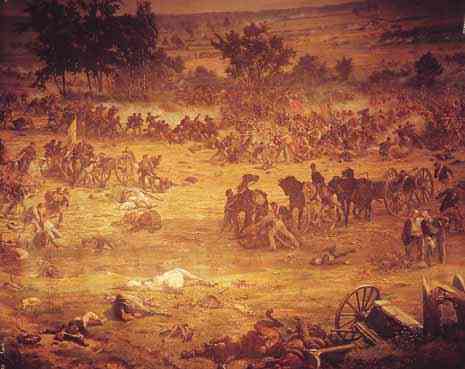
War in the West (1862-1864 AD) :-
In 1864, Union forces managed to gain a great advantage over the southerners in geography, strategy, and transportation, which greatly weakened the southerners. Grant fought bloody battles with Lee in Virginia in the summer of 1864. Lee won his tactical sense but was a strategic loser as he could not make up for his losses and had to withdraw close to his capital, Richmond. Meanwhile, William Sherman took control of Atlanta and marched towards the sea, destroying large areas of Georgia. In 1865 the Confederacy retreated with the withdrawal of Lee's forces and all the slaves were freed.
Fort Henry Battles and Fort Donelson and Shiloh In the West, the battles occurred between the years 1862 and 1864 AD in Fort Henry and Fort Donelson in West Tennessee, in which the North Army was victorious, led by General Grant, who then advanced towards Shiloh. The battle ended with the withdrawal of the southern army, after it sustained heavy casualties estimated at 11 thousand, and casualties of the northerners were estimated at 13 thousand.
Battles of control of the Mississippi :-
In the battle to control the Mississippi River, one of the naval patrols of the Federal Army occupied New Orleans, and besieged and overthrew Grant Vicksburg in April, the next day after the Battle of Gettysburg. Then the Northerners took Port Hudson. Thus, they managed to control the Mississippi River.
Battles across the Mississippi 1861-1865 :-
Gang war turned most Missouri into a battlefield. Missouri was the third largest battle during the war. As for the other western states, although they are geographically isolated from the battles in the east, they witnessed many military actions. Battles in the region took place to secure Missouri, Indianapolis, and New Mexico for union. The Confederate incursion into the territory of New Mexico was repulsed in 1862, and the Union campaign to secure the Indian Territory in 1863 was successful. In the end of the war, the Red River campaign by the Union Army failed. Texas remained in the hands of the Confederacy throughout the war, but was isolated from the rest of the Confederate states after controlling Vicksburg in 1863 which enabled the Union to control the Mississippi River.
Other fights :-
Other battles took place in Chika Mauja and Chata Noga in late 1863 CE, which ended with the withdrawal of the southern forces from the two regions, so the northern army was able to move towards Georgia and Alabama and split the southern army in two.
Last year (1864-1865 AD) :-
At the beginning of 1864, Lincoln appointed General Grant as Commander of all Union armies. Grant made his residence with the Potomac Army, and Major General William Sherman placed his command in command of most of the Western armies. Grant learned the concept of all-out war from Lincoln and Sherman, meaning that the complete defeat of the Confederate forces and their economic base would put an end to the war. This war was comprehensive not in terms of killing civilians, but in terms of destroying homes, farms and railways. Grant devised a strategic plan that would besiege the entire Confederacy from several directions: He commanded General George Mead and General Benjamin Butler to act against Lee near Richmond; General Franz Siegel (and later Philip Sheridan) attacked the Shenandoah Valley; General Sherman to take control of Atlanta and then headed to the sea (the Atlantic Ocean); Banks to control Mobile, Alabama.
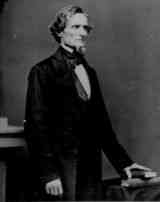
In the East, Union forces began maneuvers near Lee, and fought several battles during the "Grant's Land Expedition" in the Eastern Campaign. Battles of attrition by Grant on land, Spotsylvania, and Cold Harbor resulted in heavy losses, but he forced Lee's forces to retreat again and again. An attempt to block Lee from the south also failed, as Butler was trapped at the river bend at Bermuda Hundred. Grant was stubborn, and despite heavy casualties (over 65,000 casualties in seven weeks), he was still fighting Lee's army in North Virginia until he retreated to Richmond. The Confederate army then paralyzed the Petersburg siege, as the two armies engaged in trench conflict for more than nine months.
Finally, Grant found a commander, General Philip Sheridan, who was aggressive enough to win the Valley campaigns in 1864. Sheridan defeated Major General Gopal A. Early in a series of battles, including the final decisive defeat at the Cedar Creek battle. Sheridan then proceeded to destroy the agricultural base in the Shenandoah Valley, a strategy similar to the tactics Sherman later performed in Georgia.
Meanwhile, Sherman marched from Chattanooga to Atlanta and defeated General Joseph I. Johnston and General John Bell Hood Confederates. The fall of Atlanta on September 2, 1864, was an important factor in Lincoln's re-election as president. Hood left Atlanta to cut off Sherman's supply lines and invade Tennessee during the Franklin-Nashville campaign. General John M. was defeated. Schofield of Union Army General Hood at the Battle of Franklin, then George H Thomas also defeated him overwhelmingly in the Battle of Nashville that destroyed the Hood Army.
Sherman left Atlanta as the supply base, and walked the army to an unspecified destination, after turning 20% of Georgia farms into waste during a "march to sea" campaign. He arrived in the Atlantic Ocean at the city of Savannah, Georgia in December 1864. Sherman's army followed thousands of freed slaves, and there were no major battles during the march. Sherman headed north through South Carolina and North Carolina to reach the Confederate Virginia from the south, to increase pressure on Lee's army.
Li's army diminished as a result of casualties and desertion of soldiers, until it became much less than Grant's army. Union forces achieved a decisive victory in the Battle of Five Fives on April 1, forcing me to evacuate Petersburg and Richmond. The Confederate capital of black soldiers fell by the twenty-fifth Corps of Union Forces. The rest of the Confederate units fled westward, and after Lee was defeated in the Battle of Sailer Bay, he realized that continued fighting against the United States had become tactically and logically impossible.
Surrender of the South :-
On April 9, 1865, he surrendered his army to the Maclean House in the Valley of the Appomattox Court. [1] In an unconventional gesture, and as a sign of respect for Grant and given the Confederacy's peaceful return to union, Li was allowed to keep his sword and horse, Traveler. On April 14, 1865, President Lincoln was shot. Early the next morning, Lincoln died, and Andrew Johnson was appointed president.
The events that led to Lee's surrender began with the arrest of key officers Richard S. Ewell, Richard H. Anderson on April 6, then was followed by the defeat of the Confederates at the Battle of Sellers Chris. On April 8, the Cavalry of the Union Army led by Major General George Armstrong Custer destroyed three supply lines for the Confederacy at Appomattox station, which resulted in General Lee surrendering the next day. [2] Army of General St. John Richardson received Liddell after the Confederate fortifications fell at the Battle of Spanish Fort in Alabama, on April 9th.
On April 21, the 43rd Virginia Cavalry Brigade, led by John S., disbanded. Mosby, 43rd Battalion, Virginia Cavalry, On April 26, General Joseph E. Johnston forces his Sherman at Bennett Place in Durham, North Carolina. On May 4 and 5, the Confederate departments surrendered to Alabama, Mississippi, East Louisiana, and the District of Golf. On May 10, the Confederate President was arrested and the Florida and South Georgia State Administration surrendered on the same day. General Confederate Gen. "Jeff" Meriwether Thompson surrendered his brigade the next day, and on the following day, North Georgia forces surrendered.
On June 23, 1865, Stand Wati signed a ceasefire agreement with union representatives at Fort Towson, Choctaw Nations, Oklahoma State, to become the last confederate general to step down from the battlefield. The Confederate CSS SS Shenandoah was the last to surrender, on November 6, 1865, in Liverpool, England. This surrender marked the end of the American Civil War.
Slavery during the war :-
At the beginning of the war, some union leaders thought that fleeing slaves were to be returned to their masters. By 1862 it became clear that this war would be long, and then the question arose what to do about what to do about slavery. Given that the economic and military situation in the south depends on forced labor. It became unreasonable to protect the slave trade while imposing a blockade on the southern economy and destroying production.
As one congressman said, the issue of slaves cannot be neutral. Workers, if they are not soldiers, will be rebel allies, or union allies. [3] The member of Congress and his radical Republican colleagues pressed Lincoln to quickly free slaves, while moderate Republicans gradually accepted this, to compensate for emancipation and colonialism. [4] Those with copper heads, border states, and war democrats opposed liberation, although border states and war democrats eventually accepted him as part of the all-out war needed to save the union.
In 1861, Lincoln expressed his fears of any premature liberation attempts that would mean the loss of border states, and that "losing Kentucky is like losing the entire battle." [5] Initially, Lincoln made liberation attempts by Secretary of War Simon Cameron and General John C. Fremont (in Missouri) and General David Hunter (in South Carolina, Georgia, and Florida) in order to maintain the loyalty of border states and war democrats.
Lincoln warned the border states against the increased radical character of liberation if he rejected his gradual plan based on compensation for emancipation and voluntary colonialism. The District of Columbia was the only one to accept Lincoln's gradual plan, and Lincoln announced the emancipation of slaves on July 21, 1862. Secretary of State William Seward asked Lincoln to wait for victory before making an announcement, as doing otherwise would appear to be "the last attempt to retract." In September 1862, this opportunity arose at the Battle of Antietam, The ensuing Conference of War Officials, which provided additional support for the declaration. Lincoln also published a message to encourage border states to accept liberation as a necessity to save the union.
Lincoln later said that slavery was "the cause of war." Lincoln issued his initial report of the Declaration on the Emancipation of Slaves on September 22, 1862, and his final report on January 1, 1863. Lincoln made his point in his letter to Hodges "If slavery is not a mistake, there is nothing else wrong ... and so far I have never understood that the presidency It is my right to act unrestricted to act formally on the basis of this judgment and feeling ... and I claim that there have been no events that have controlled it, but I admit frankly that it was the events that controlled me.
Since the declaration of the emancipation of slaves was based on the powers of the warlords, the war included territory controlled by the Confederates at that time. However, the Declaration became a symbol of the Union's growing commitment to add liberation to the Union's definition of freedom. Lincoln also played a pioneering role in getting Congress to vote on the Thirteenth Amendment, which made liberation comprehensive and permanent.
African-American slaves did not wait for Lincoln's move, but fled in search of freedom outside the union. Hundreds of thousands of African Americans fled to the Union from the early years of the war, especially in occupied areas such as Nashville, Norfolk, Hampton Roads in 1862, Tennessee from 1862 until the Sherman March, etc. Many of them have also fled to the borders of the Union, where leaders have built camps and schools for adults and children to learn to read and write. The American Missionary Association also sent teachers to the smuggled southern camps, and schools were also established in Norfolk and the nearby colonies. In addition, approximately 200,000 African-Americans worked as soldiers and sailors with Union forces. Most of these were fleeing slaves.
The Confederates enslaved the black soldiers of the Union, and it was the black soldiers who were shot dead while trying to surrender in the Fort Belo massacre. This led to a breakdown of the prisoner exchange program and an increase in detention camps such as Anderson Prison in Georgia, where nearly 13,000 prisoners of the Union Army died of starvation and disease.
Although manpower decreased in the south, until 1865, most southern commanders were opposed to arming slaves as soldiers. They were using them as workers to support the war effort. As Howell Cobb said, "The servitude is as soldiers, so our whole view of slavery is wrong." General Patrick Claiborne, General and Robert Lee both argued over arming blacks in the late war, while Jefferson Davis was finally convinced to support plans to arm slaves to avoid military defeat. Confederate surrender was also possible in Appomattox before this plan.
The Declaration on the Liberation of Slaves dampened the Confederates ’hope of aid from Britain or France. Lincoln's moderate approach managed to control the border states, while war democrats and freed slaves were still fighting for union. The Union-controlled border states are: (Kentucky, Missouri, Maryland, Delaware, and West Virginia) not covered by the Declaration on the Liberation of Slaves. All of these states abolished slavery on their own, except Kentucky and Delaware. The Declaration on the Liberation of Slaves released the vast majority of the slaves, which amounted to 4 million slaves, and the armies of the Union moved south. Thirteenth Amendment to the Constitution of the United States of America On December 6, 1865, the Thirteenth Amendment was approved, and finally the remaining slaves in Kentucky, Delaware, and New Jersey were freed, whose numbers reached 225,000 in Kentucky and 1,800 in Delaware, and 18 in New Jersey as of 1860.
Repel international intervention :-
The entry of Britain and France into the war on behalf of the Confederacy would greatly increase the South's chance of independence from the Union. [22] The Union, led by Lincoln and Secretary of State William Seward, acted to block this, and threatened to launch a war if any country formally recognized the existence of the Confederate States of America (and therefore no one did).
In 1861, southerners banned cotton shipments, in the hope that this would cause an economic depression in Europe, forcing Britain to go to war in order to obtain cotton. The Cotton Plan proved to be a failure, as Europe had a surplus of cotton, while the failure of the 1860-62 crops in Europe had given the North's cereal exports great importance. It was said that "corn trade is stronger than cotton trade", as the US cereal ranges from about a quarter to half of Britain's imports.**
When Britain faced cotton shortages, it was temporarily replaced by increased agriculture in Egypt and India. Meanwhile, the war has created jobs for arms manufacturers, iron workers, and British arms transport vessels.
Charles Francis Adams particularly proved his skill as Minister for Britain for the United States and Britain did not want to defy the blockade boldly. The Confederacy purchased several warships from builders of merchant ships in Britain. One of the most well-known was CSS Alabama, which was badly damaged and led to serious post-war conflicts. However, public opinion against slavery created a political responsibility for European politicians, especially in Britain. The specter of war loomed in late 1861 between the United States and Britain over the Trent case, as US Navy personnel working on a British postal ship were accused of arresting two Confederate diplomats. However, London and Washington managed to overcome the problem after Lincoln released the two.
In 1862, Britain was considered a mediator, although such an offer would risk a war with the United States led by Lord Palmerston who was said to have read Uncle Tom’s Cabin three times [25] when deciding on this matter. However, the union's victory in the Antietam battle led them to postpone this decision. The Declaration on the Liberation of Slaves also reinforced the political responsibility to support the Confederacy. Despite sympathy for the Confederacy, France's takeover of Mexico eventually deterred them from the war with the Union. As for the Confederate offers in the end of the war to end slavery in exchange for diplomatic recognition, London or Paris did not seriously consider it.
WAR results :-
The American Civil War led to the abolition of the slave system throughout the United States and the victory of the North was a guarantee for the survival of the Union, but that war cost the country huge numbers of lives, as the number of deaths on both sides reached 620 thousand, including 360 thousand from the north and 260 thousand from the south . More than half of them died as a result of disease. The war generally cost Americans a heavy price in property, farms, industry, and commerce, and many civilians perished - men, women, and children. The war has introduced new methods of martial arts, which made it described as the first modern war, because for the first time it fights soldiers under a unified command, from trenches, and to implement a complete blockade. The war also introduced the use of equipment such as armored ships, mines, observation balloons, etc. It was considered a modern war due to the extensive destruction it brought, as it was a comprehensive war in which all the energies of the combatants were used.
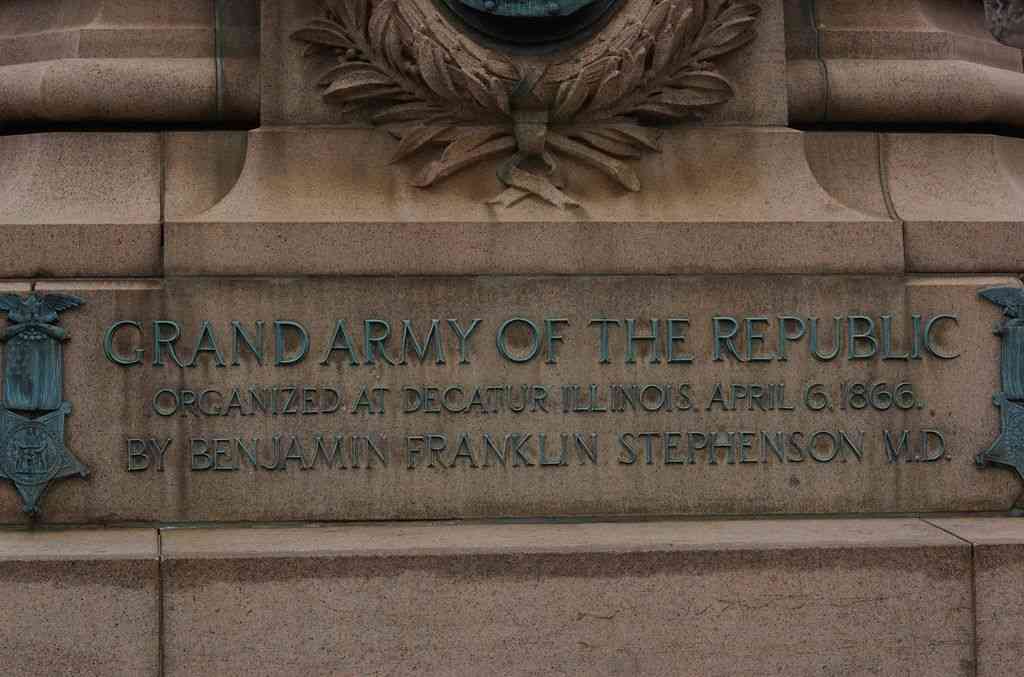
The complete reunification of all of the United States took action and post-war effort in a process known as Reconstruction. The war has left more than 970,000 people dead (3% of the total population) that includes 620,000 soldiers - two thirds of them sickened by disease.
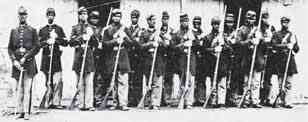
Historians have debated whether the Confederacy won the war. Most scholars emphasized that the union had long-term benefits that were more insurmountable than Confederation in terms of industrial and demographic strength. As for the Confederates, they argue and delay only defeat. The southern historian Shelby Foote briefly expressed his view, saying: "I think the North fought the war with one hand behind its back ... But if there are more southern victories, and much more, The North would have used his other hand, which was behind his back. I do not think the South had any chance to win that war. [26] The Confederacy sought independence during the Lincoln era, but after the fall of Atlanta and Lincoln's defeat of McClellan in the elections in 1864, any hope of a political victory for the South ended.
Here, Lincoln succeeded in obtaining the support of frontier states, war democrats, and freed slaves, as well as Britain and France. When he defeated the Democrats and McClellan, he also defeated the brass heads. Lincoln also found military commanders such as Grant and Sherman who would take advantage of the numerical superiority of Union armies in the battle against the Confederate armies. The generals who did not refrain from bloodshed won the war, and from the end of 1864 on wards there was no longer any hope for the south.
On the other hand, James McPherson said that the North's superiority in population and resources made his victory likely, but inevitable. The Confederacy did not need to invade and control enemy territory in order to win, but only needed to fight a defensive war to convince the North that the cost of victory was too great. As for the North, it needed to conquer and control vast areas of enemy territory, and defeat the Confederate armies in order to win.
It was also important for Lincoln's eloquence to clarify the national purpose, as well as his skill in keeping border states linked to the union. Although Lincoln's approach to emancipation was slow, the proclamation of slave liberation was an effective use of the president's powers during the war.
Economy :-
The most industrialized North helped produce weapons, ammunition and supplies, as well as finance, and transportation. The table shows a comparative advantage for the Union over the Confederate States of America (Canadian Space Agency) at the start of the war. The advantages expanded rapidly during the war, as the northern economy grew, while the Confederate territories contracted and their economies weakened. The Union's population reached 22 million compared to 9 million in the south in 1861, and the south's population included more than 3.5 million slaves and about 5.5 million whites, and thus the southern population of the whites increased by more than four to one compared to the north. Inequality increased as the Confederation took control of more and more southern lands using garrisons, and crossed the Mississippi in the Confederate parts.
Initially, the Union controlled over 80% of ships, ships, and river and marine boats. Added to this is a huge shipbuilding program. This enabled the Federation to control the rivers and impose a blockade on the entire southern coast. Having excellent railways between the cities of the Union provides fast and cheap movement of troops and supplies. In contrast, transportation was much slower and more difficult in the south, which was unable to increase the rail system, repair the damage, or even perform routine maintenance. Davis failed to maintain positive and fruitful relationships with state governors (Especially Georgia Governor Joseph E. Brown, North Carolina Governor Zebulon Vance Bird) has harmed his ability to benefit from regional resources.
The damage the cotton trade problem in the Confederate states to the global economy has led to bad diplomatic relations, such as the refusal to ship cotton before the embargo began. It was possible to declare the liberation of African-American slaves, whether from free blacks, or fleeing slaves, From joining the Union Army. About 190,000 people volunteered to reinforce the exploitation of the numerical superiority that Union armies had enjoyed from Confederate armies, who did not dare to match the equivalent of manpower due to fear of undermining the legality of slavery. Liberated slaves often performed garrison duties, and they fought numerous battles in 1864-1865. Large numbers of European immigrants also joined the Union Army, of whom 177,000 were born in Germany and 144,000 were born in Ireland.
Reconstruction :-
The northern leaders agreed that victory required more than the end of the fighting. The two goals of the war had to be achieved: it was necessary to completely separate and eliminate all forms of slavery. But they differed greatly on the criteria for achieving these goals. They also disagreed on the degree of federal control that should be imposed on the south, as well as the reintegration of southern states into the union.
Reconstruction, which began early in the war and ended in 1877, involved a complex and rapid series of changes in state and union politics. The long-term results were reflected in three amendments to the reconstruction of the constitution: the thirteenth amendment, which abolished slavery and slavery; the fourteenth amendment, which extended the federal legal protection of citizens on an equal basis regardless of race, and the fifteenth amendment, which eliminated racist restrictions on voting . Reconstruction in different countries ended at different times, and the last three are a settlement in 1877.
Results Slavery actually ended in the United States in the spring of 1865 when the Confederate armies surrendered. The Declaration on the Liberation of Slaves released all the slaves in the Confederacy, which stated that slaves in the Confederate regions were free. Slaves were also released in the border states and parts controlled by the Union by state law (on December 6, 1865) with the thirteenth amendment. The complete restoration of the union resulted from the work of a continuous post-war era known as Reconstruction. The war produces about 1,030,000 Of the victims (3% of the population), including about 620,000 deaths (or two-thirds) due to illness. The number of Americans killed in this war is equal to the number of deaths in all the wars of the United States of America combined.
The causes that led to the war, its results, and even its name are still subjects of the dispute until today. During the period 1861-1865 he had released 4 million black slaves. According to the official population statistics of 1860, There are about 8% of white males between the ages of 13 and 43 who died in that war, as well as about 6% in the northern states region and a large proportion was estimated at 18% in the southern states region. One reason for the large number of deaths during the war was the use of Napoleon's tactics such as cartoons. With the use of types of fast guns, mini-ball (used by the Union Army near the end of the war) and firearms such as the Spencer and a few experimental Gatling rifles, many soldiers perished because of them. This resulted in trench warfare, a tactic that was frequently used during World War 1.
Thank you For Reading The Article, I Hope You Enjoyed,,, Please Do Not Forget To Subscribe To Our Author's Page,,, Thank you.


